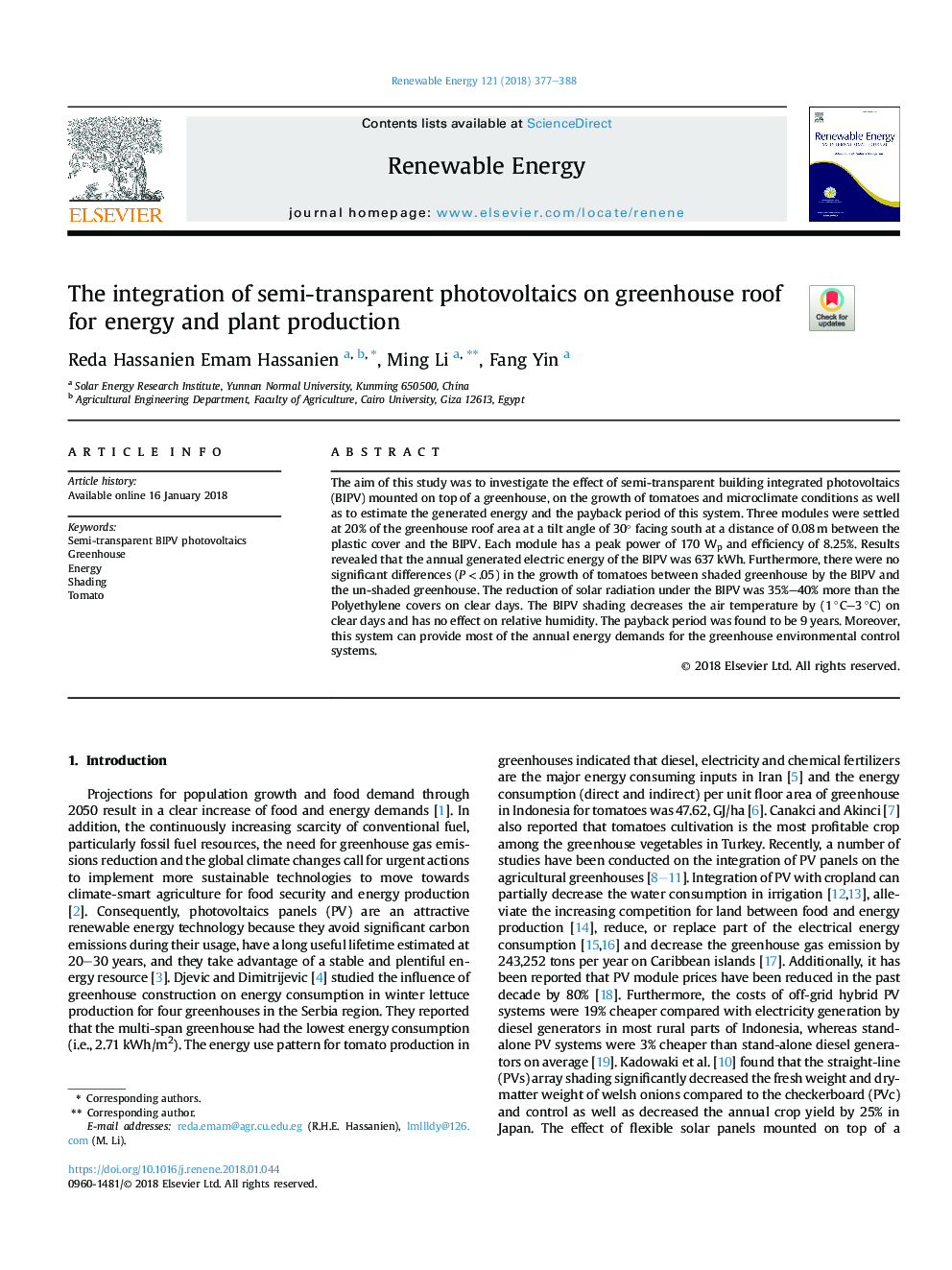| Article ID | Journal | Published Year | Pages | File Type |
|---|---|---|---|---|
| 6764758 | Renewable Energy | 2018 | 12 Pages |
Abstract
The aim of this study was to investigate the effect of semi-transparent building integrated photovoltaics (BIPV) mounted on top of a greenhouse, on the growth of tomatoes and microclimate conditions as well as to estimate the generated energy and the payback period of this system. Three modules were settled at 20% of the greenhouse roof area at a tilt angle of 30° facing south at a distance of 0.08â¯m between the plastic cover and the BIPV. Each module has a peak power of 170 Wp and efficiency of 8.25%. Results revealed that the annual generated electric energy of the BIPV was 637â¯kWh. Furthermore, there were no significant differences (Pâ¯<â¯.05) in the growth of tomatoes between shaded greenhouse by the BIPV and the un-shaded greenhouse. The reduction of solar radiation under the BIPV was 35%-40% more than the Polyethylene covers on clear days. The BIPV shading decreases the air temperature by (1â¯Â°C-3â¯Â°C) on clear days and has no effect on relative humidity. The payback period was found to be 9 years. Moreover, this system can provide most of the annual energy demands for the greenhouse environmental control systems.
Keywords
Related Topics
Physical Sciences and Engineering
Energy
Renewable Energy, Sustainability and the Environment
Authors
Reda Hassanien Emam Hassanien, Ming Li, Fang Yin,
